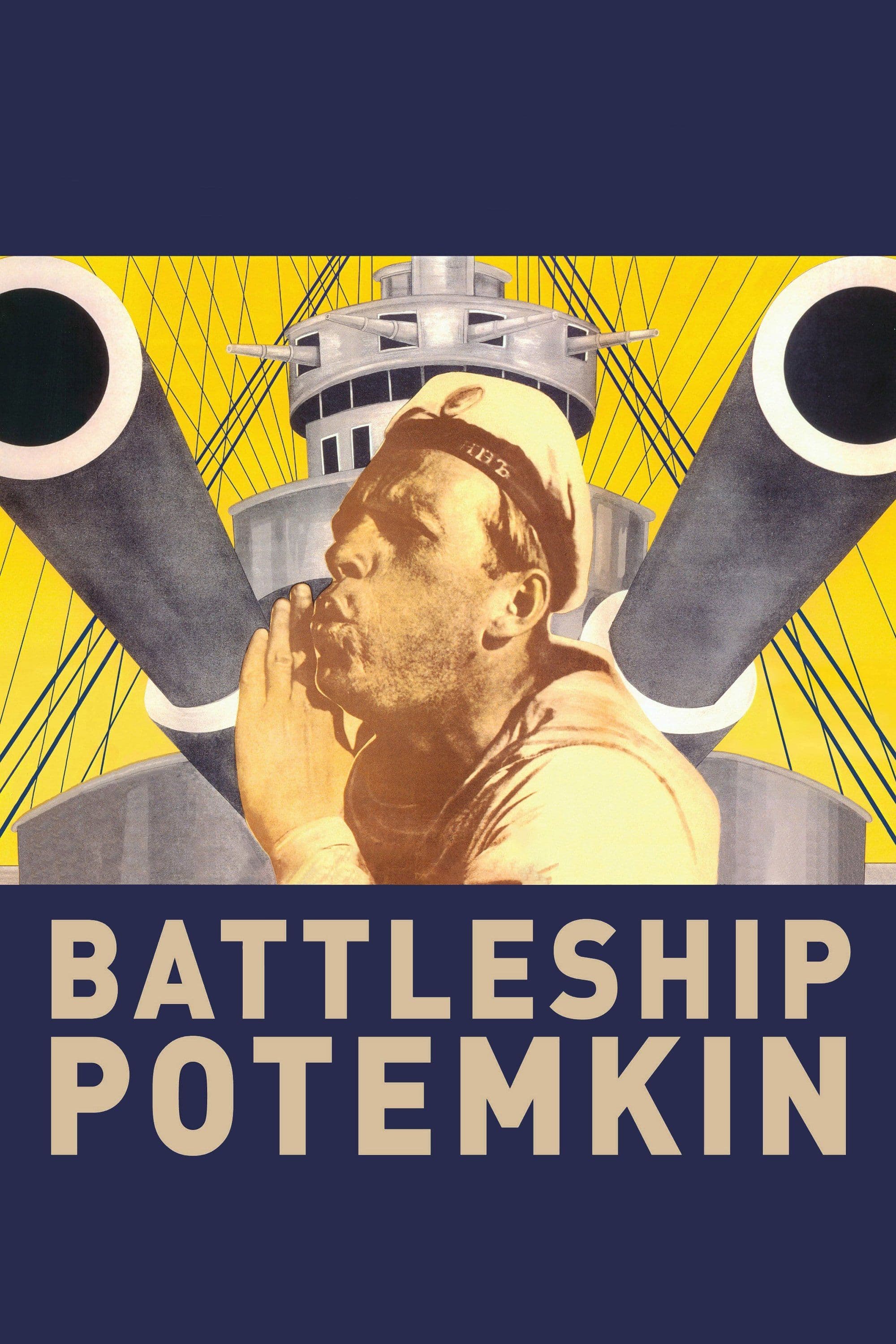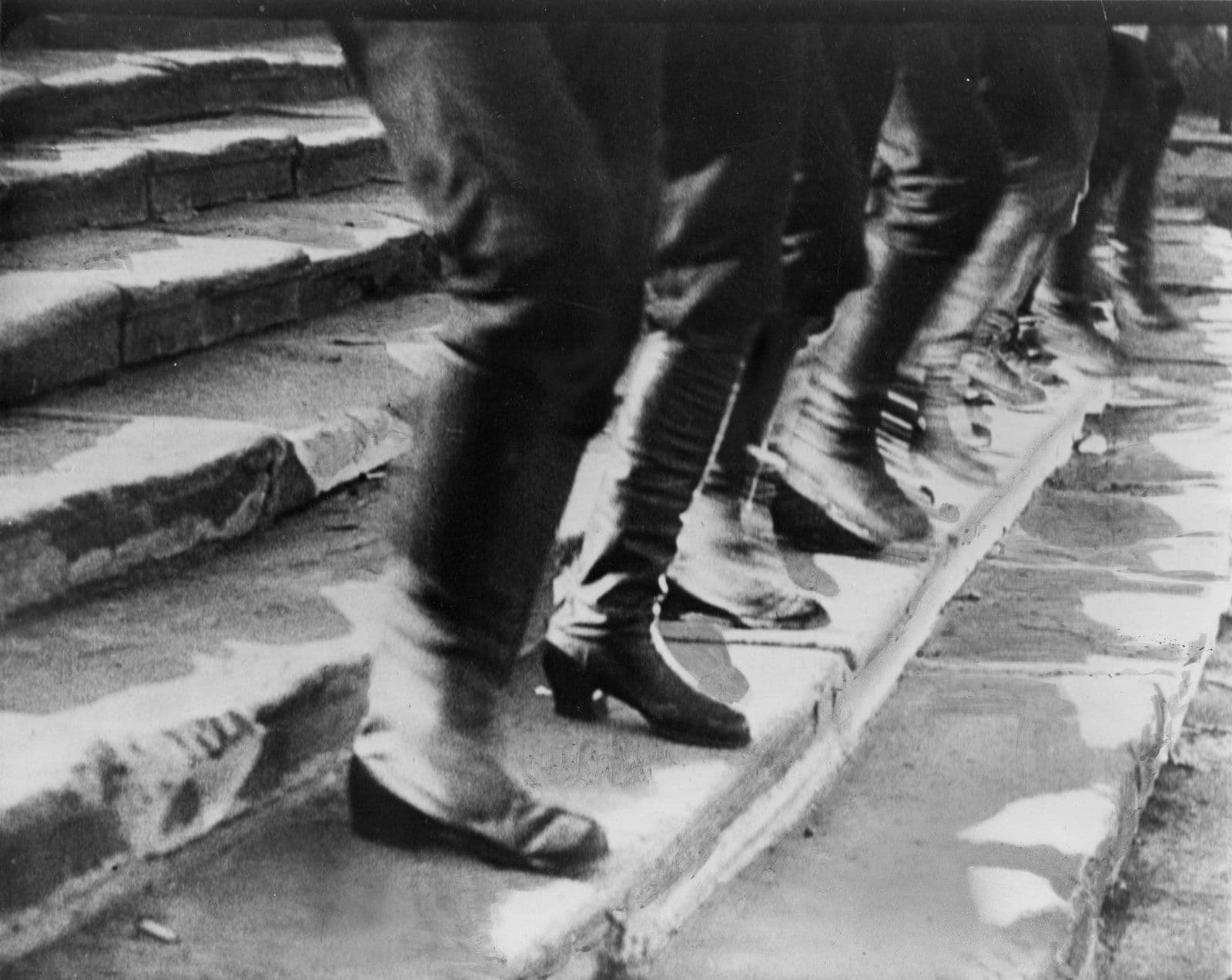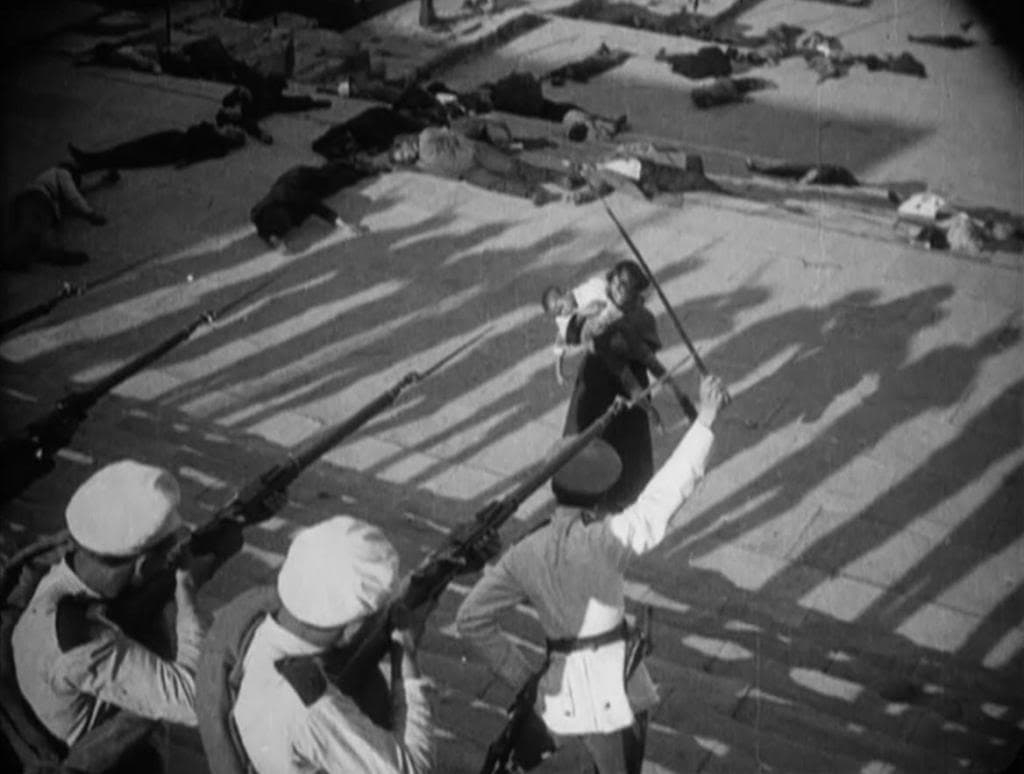
Battleship Potemkin
1925
Rate this movie
Average: 0.00 / 5
(0 votes)
Director
A timeless work that gave life and consciousness to Cinema, instilling the awareness that it could and should ascend to Art. The film commissioned by the Soviet Government from Eisenstein was intended to carry out resounding communist propaganda. But the director's art transcended the propagandistic intent, crafting a timeless masterpiece. Eisenstein introduced the concept of "montage of attractions," which is the juxtaposition of images that provoke strong and immediate emotional reactions in the viewer. It is not a mere sequential assemblage, but rather a calculated clash between heterogeneous elements, a dialectical collision that generates meaning and emotional impact in the viewer's mind. This theory, developed in counter-tendency to the classical narrative school, aimed to awaken the audience's consciousness, to provoke them intellectually and viscerally, transforming them from passive recipients into active participants in the construction of meaning. It was the idea of a cinema that did not merely recount, but rather constructed the message directly in the intellect and viscera of the audience, an extension of Marxist theory applied to art. The famous Odessa Steps sequence is an emblematic example of this approach, where the montage creates a sense of unprecedented chaos and violence. Through rapid cuts, fragmented shots, and the obsessive repetition of certain visual motifs – such as the terrified close-up of a woman with broken glasses or the soldiers' feet marking the inexorable rhythm of the tragedy – Eisenstein does not merely represent a massacre, but makes it come alive with shocking brutality. The frenetic rhythm of the montage contributes to creating a sense of urgency and active participation on the part of the viewer. The images follow one another rapidly, creating a continuous flow of emotions, a visual and psychological vertigo that offers no respite. The images from "Battleship Potemkin" are so powerful that they have become iconic, a visual archetype that has permeated popular culture and global cinematic language. The baby carriage rolling down the stairs, the face of the dead child, the roaring lion – achieved through a montage of three different marble sculptures, each depicting a different stage of the animal waking and roaring, symbolizing the awakening of the oppressed class – are just a few examples of how Eisenstein succeeded in creating a universal visual language, capable of transcending linguistic and cultural barriers. Every image is laden with symbolic meaning. The steps, with their inexorable descent, represent the class struggle and the precipitous unfolding of events towards catastrophe, but also the resistance and unity of the people against the oppressor; the lion symbolizes the Tsar's power awakening in popular wrath, while the baby carriage represents innocence sacrificed on the altar of political repression, a motif of heartbreaking universality consciously or unconsciously echoed in countless subsequent works.
The work is divided into five acts, almost like a Greek or Shakespearean tragedy in its dramatic and inevitable progression: Men and Maggots, Drama on the Quarterdeck, A Dead Man Calls, The Odessa Steps, and One Against All. The choice of 1905 was not coincidental; the film was commissioned on the occasion of the twentieth anniversary of what, for the nascent Soviet Union, was considered the "dress rehearsal" for the October Revolution. The government wanted a celebratory epic that would elevate the event to a founding myth, and Eisenstein, though very young – he was only twenty-seven – was chosen for his experimental audacity and his already well-defined theoretical vision. In 1905, in the port city of Odessa, the sailors of the battleship Potemkin rebelled against the authorities due to the spoiled food they were served – meat infested with maggots, a visual detail that opens the work and immediately establishes the tone of degradation and oppression. The killing of sailor Vakulinchuk, a comrade-in-arms, inflamed spirits and led to mutiny, transforming a protest over hygienic conditions into a revolutionary spark. The revolt spread to Odessa, where the civilian population, hungry and weary of Tsarist injustices, spontaneously joined the sailors, united by the common cause of freedom and dignity. Eisenstein, through frenetic montage and powerful images, depicts the bloody repression by the Tsarist army. It is here that his art makes a daring leap beyond mere chronicle: although historical facts recount violence and clashes, the renowned Odessa Steps scene, with women, children, and the elderly massacred in an orgy of indiscriminate violence, is largely a creation of his directorial genius. There is no historical documentation of such a specific and brutal massacre on those steps; it is rather a dramatic and symbolic synthesis of the atrocities committed by Tsarist repression in multiple places and moments. This act of artistic license does not diminish its power, but rather enhances its metaphorical function, making it a universal symbol of the brutality of tyrannical power against defenseless innocence. Battleship Potemkin, a symbol of revolt and hope, sailed towards Sevastopol, hoping to find support from other ships in the fleet, but was met with hostility. The film concludes with a powerful and symbolic image: the lone battleship at sea, shrouded in an almost mystical fog, a symbol of a repressed but not forgotten revolt, a silent warning and a promise of future redemption that would materialize in the subsequent revolution.
Through innovative, audacious, and unprecedented cinematic language, Eisenstein transforms a historical event into a work of art that transcends the boundaries of time and space, becoming a universal icon of the struggle for freedom and the denunciation of injustices. A film whose images speak with extraordinary power, so much so that it is perfectly legitimate to speak of iconic force, a new language that would soon shape countless minds and win adherents in European and global cinematic circles. Its influence is felt in widely diverse directors, from Brian De Palma with his explicit citation of the baby carriage sequence in The Untouchables, to avant-garde directors who have explored the suggestive power of non-narrative montage. Eisenstein demonstrated how Cinema can be a powerful instrument for conveying ideological messages and influencing public opinion, not through flat exposition, but through pure emotion and sensory experience. His ability to act directly on the collective unconscious made Battleship Potemkin an object of admiration but also of fear, leading to its censorship in various countries, such as Nazi Germany or Great Britain, for its presumed ability to incite subversion. At the same time, and herein lies its greatest lesson, he also demonstrated how Art and Politics can coexist, not in a relationship of subordination, but by sublimating any ideological intent into the artistic object itself, transforming propaganda into epic poetry. It is not the regime's rhetoric that makes it great, but its intrinsic aesthetic force, its narrative and visual architecture that elevates the particular to the universal. A legacy of immense scope that would be taken up by many other artists to come, a milestone not only in the history of Soviet cinema but of the entire seventh art, whose roar still echoes with undiminished power.
Genres
Country
Gallery





Featured Videos
Official Trailer
Comments
Loading comments...